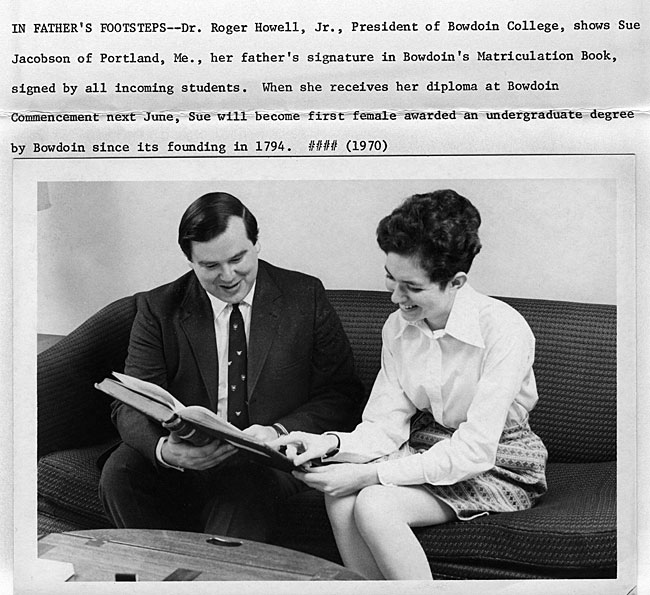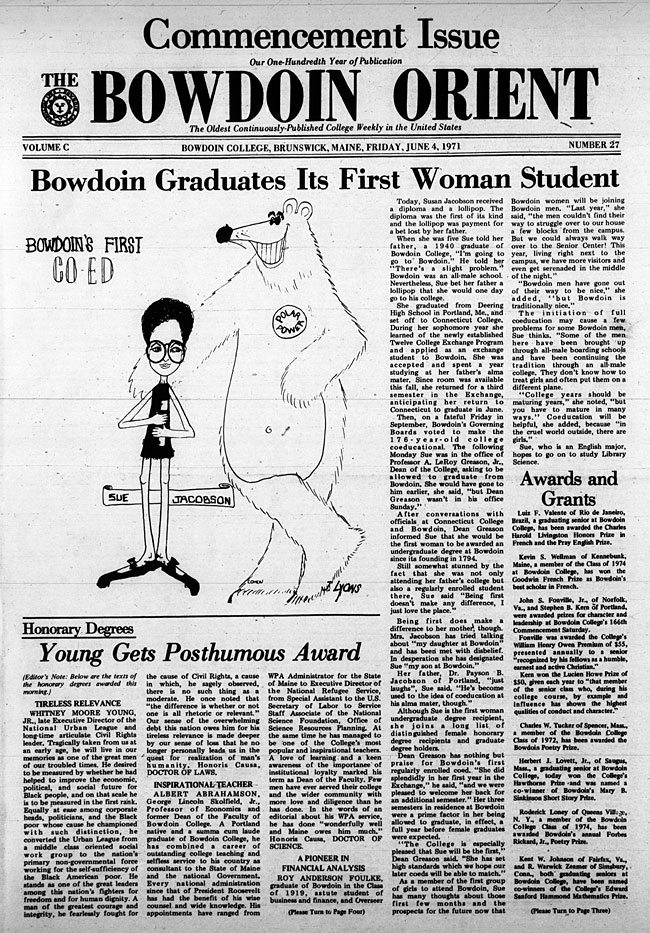Susan Jacobson, Bowdoin’s first college graduate, is pictured sitting next to President Dr. Roger Howell peering at her father’s signature in Bowdoin’s famous matriculation book (Document 18, GB). Jacobson, who recently passed away on October 4, 2011 graduated magna cum laude with a degree in English, then pursued a masters in library science at Simmons. She then worked at Yale and Youngstown State University as an acquisition librarian.
Native of Portland, Jacobson attended Bowdoin through the Twelve College Exchange Program and eventually transferred to Bowdoin from Connecticut College. Along with her interest in the small but highly touted English department at Bowdoin, Jacobson also wanted to attend the same college her father enjoyed during his undergraduate years. The administration of Bowdoin allowed alumni’s daughters a chance to attend Bowdoin helped the college transition to coeducation. Alumni would be in favor of coeducation because it was giving their daughters an opportunity to their alma mater.
Jacobson’s signature proudly holds its place as one of the first female names in this matriculation book. The tradition of signing the matriculation book at Bowdoin still holds firm where students meet briefly with the President of Bowdoin before signing the famous book themselves. Students have a brief one on one conversation with the President and are then invited to sign the book to become a part of Bowdoin’s history. The signing now takes place during orientation for freshman every fall.

